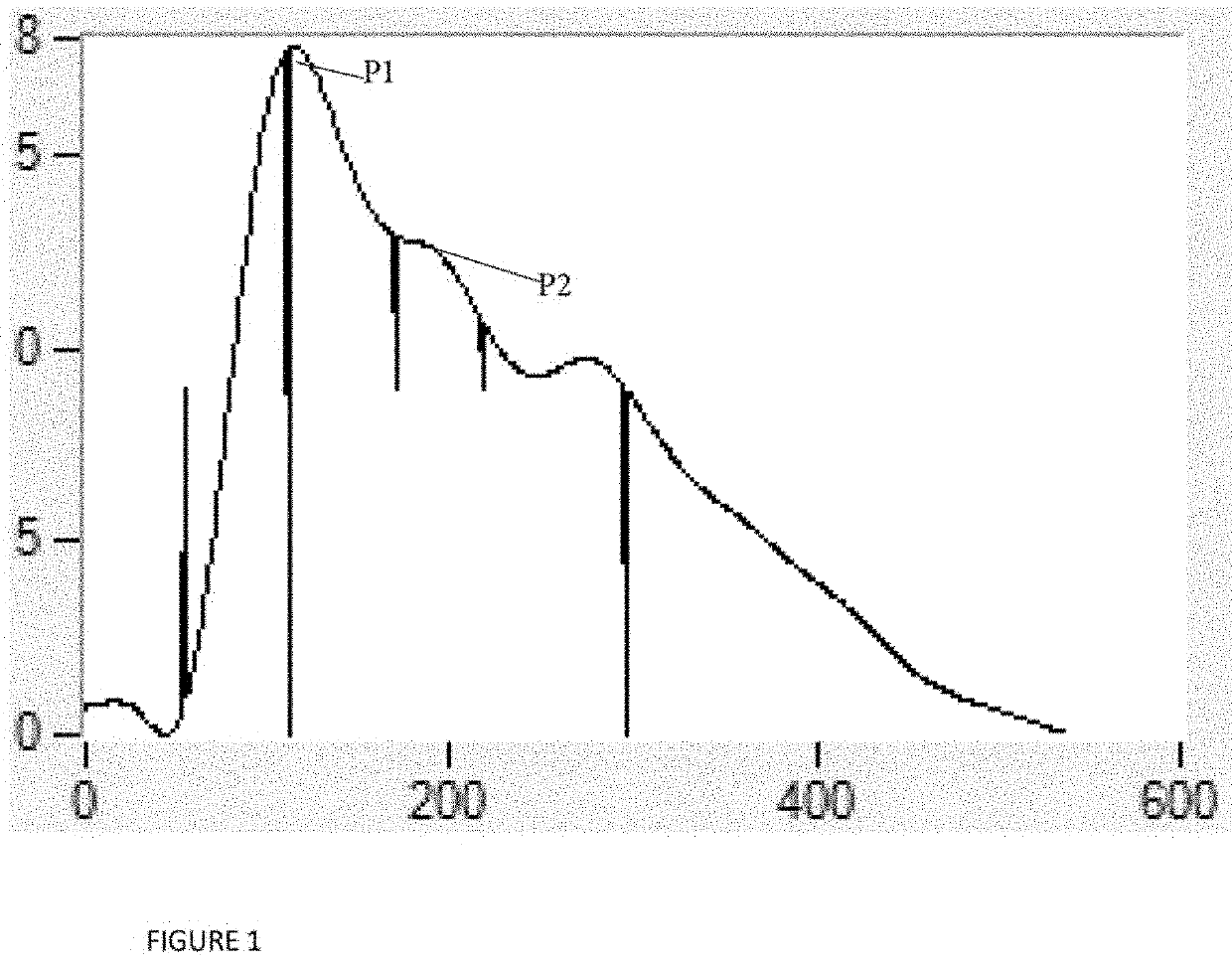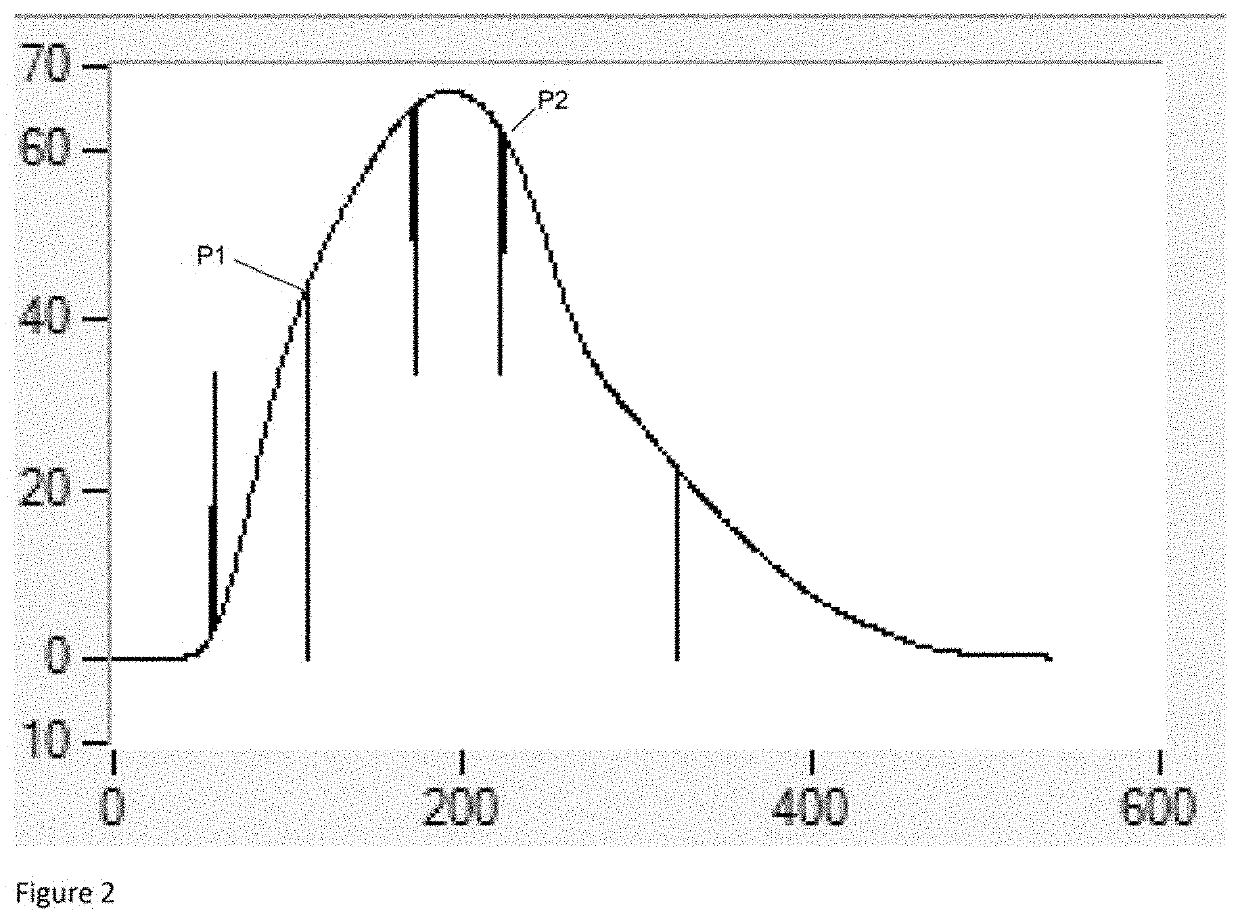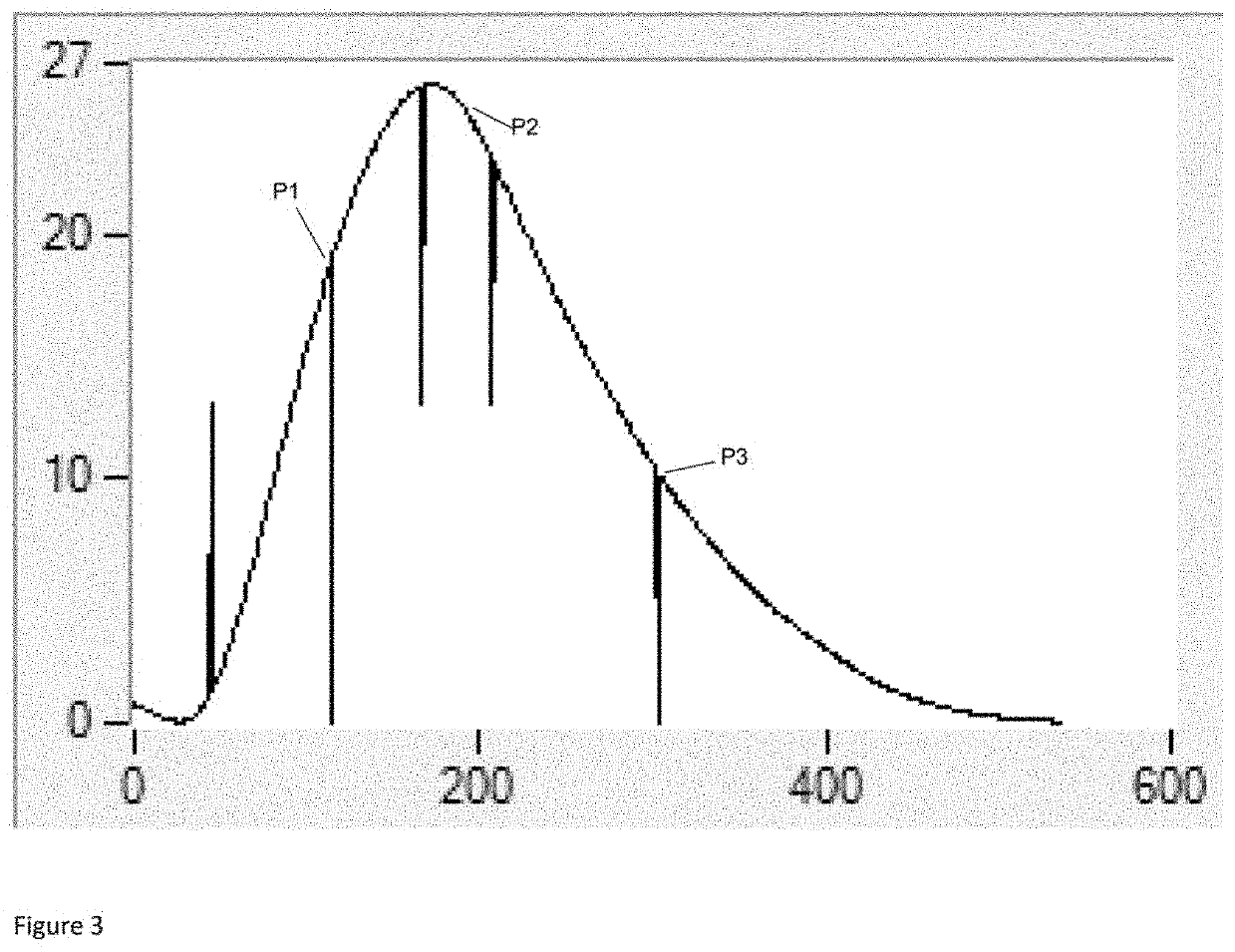Non invasive monitoring of arterial stiffness
a technology of artery stiffness and non-invasive monitoring, which is applied in the field of non-invasive monitoring of artery stiffness, can solve the problems of increasing the risk of cardiovascular disease and stroke, increasing the time of arterial pulse reflection, and increasing the risk of strok
- Summary
- Abstract
- Description
- Claims
- Application Information
AI Technical Summary
Benefits of technology
Problems solved by technology
Method used
Image
Examples
Embodiment Construction
Definitions
[0022]As used herein the term “augmentation index” refers to a ratio calculated from the blood pressure waveform and is a measure of wave reflection and arterial stiffness. Augmentation index is commonly accepted as a measure of the enhancement (augmentation) of central aortic pressure by a reflected pulse wave.
[0023]As used herein the term “AS factor” refers to the designation assigned to the degree of arterial stiffness in a subject and is equal to the integration of the area under the curve of the second derivative of the arterial pulse shape between the first negative-going zero crossing and the location of the P3, multiplied by −1.
[0024]As used herein the term “CareTaker” refers to the hardware platform, the model, and the algorithm implementation have been described in detail in U.S. Pat. Nos. 8,100,835, 7,087,025, and application Ser. No. 13 / 231,703 for the determination of Pulse Decomposition Analysis (PDA).
[0025]As used herein the term “inzisura” refers to a down...
PUM
 Login to View More
Login to View More Abstract
Description
Claims
Application Information
 Login to View More
Login to View More - R&D
- Intellectual Property
- Life Sciences
- Materials
- Tech Scout
- Unparalleled Data Quality
- Higher Quality Content
- 60% Fewer Hallucinations
Browse by: Latest US Patents, China's latest patents, Technical Efficacy Thesaurus, Application Domain, Technology Topic, Popular Technical Reports.
© 2025 PatSnap. All rights reserved.Legal|Privacy policy|Modern Slavery Act Transparency Statement|Sitemap|About US| Contact US: help@patsnap.com



